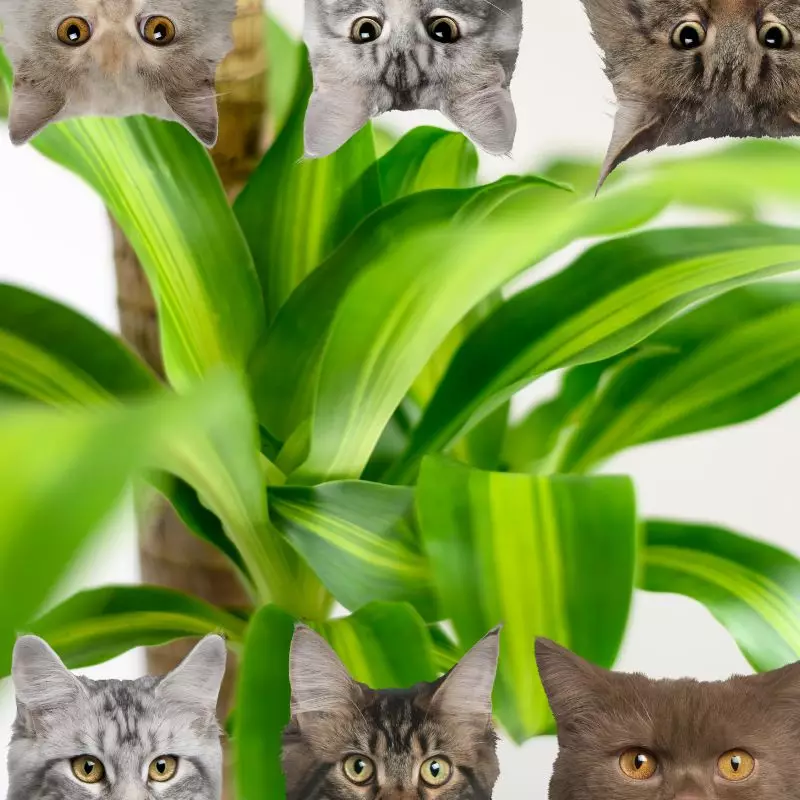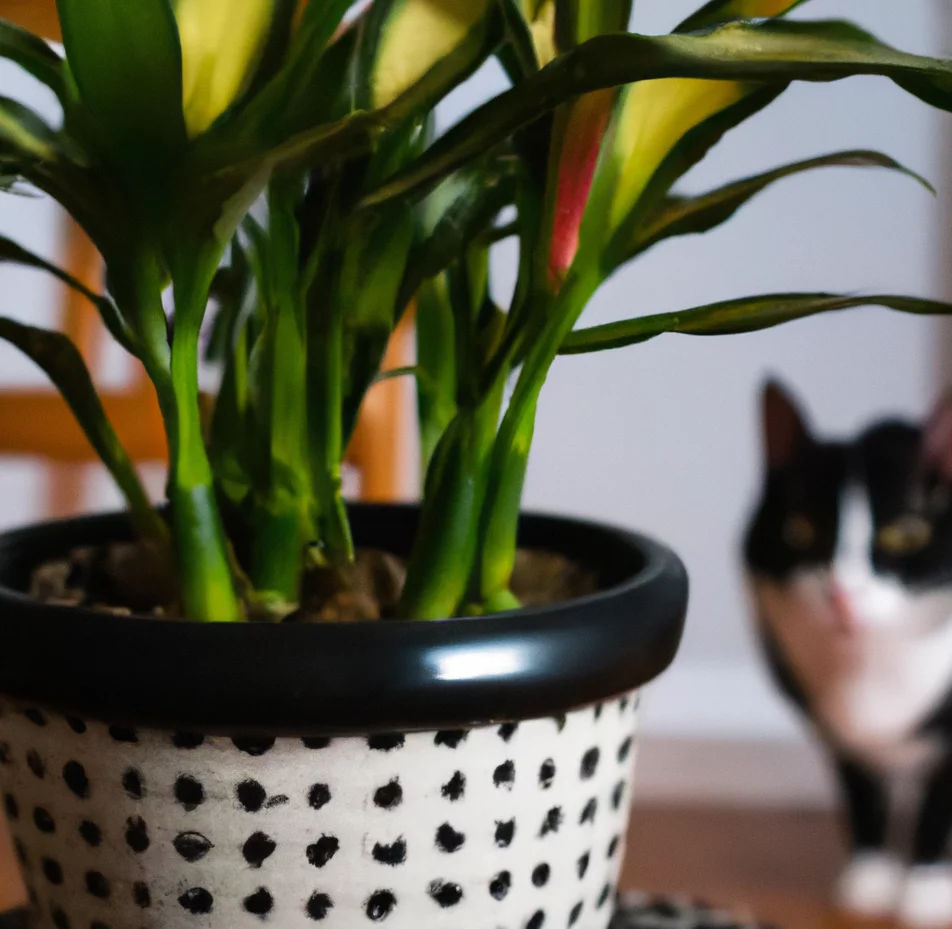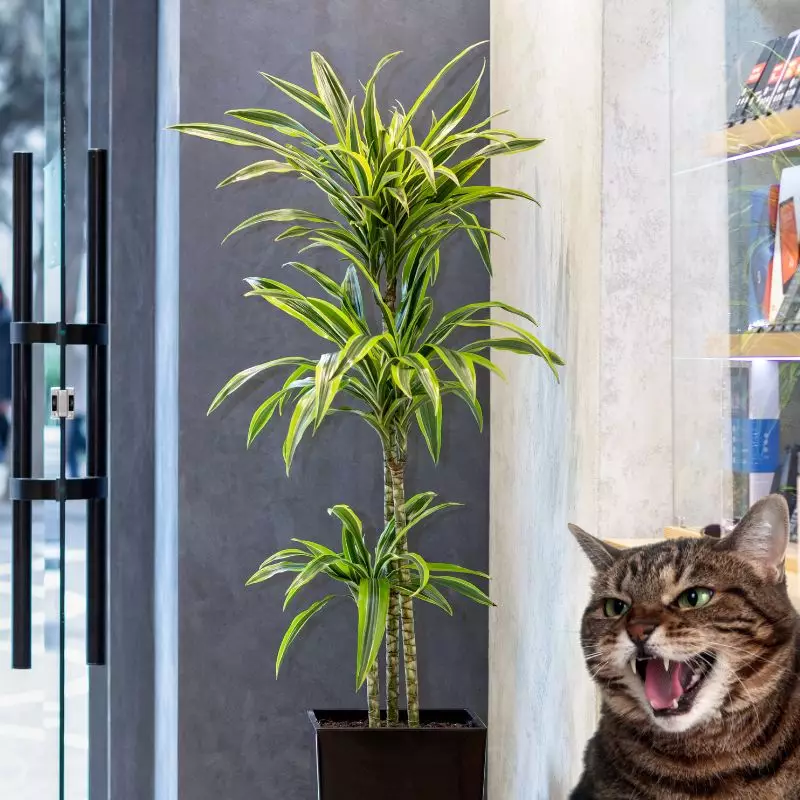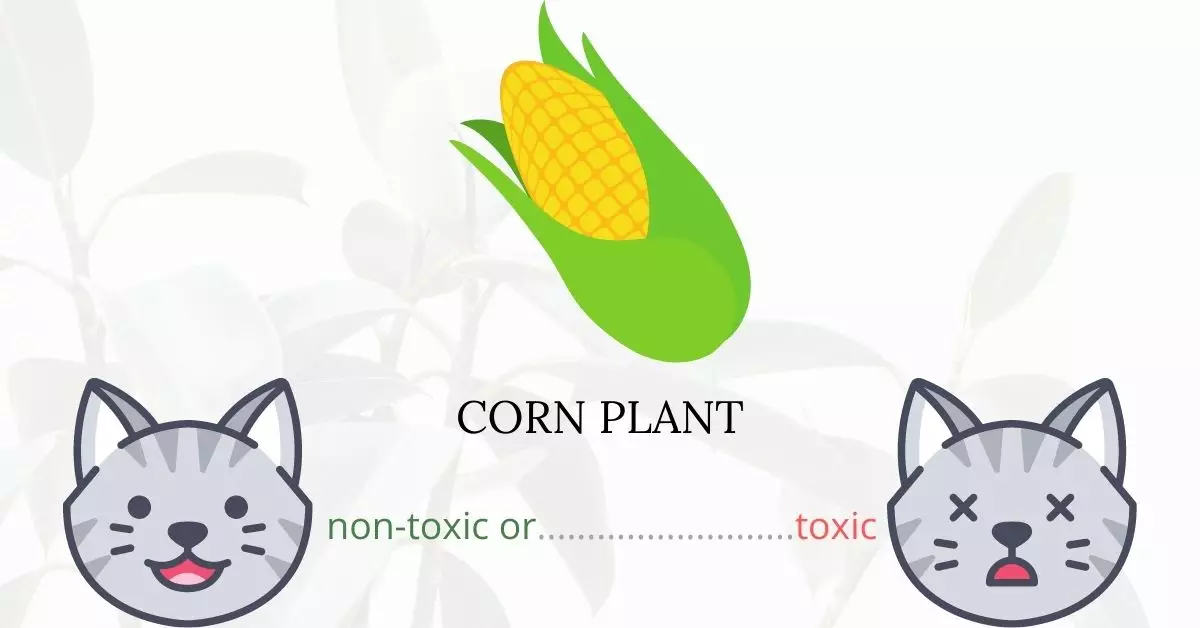Yes, Corn Plants, also known by their other common names such as cornstalk plant, dracaena, dragon tree, and ribbon plant, are toxic to cats. These plants contain saponins, which are harmful to felines. As a result, while they serve as popular ornamental choices for many gardens, it is crucial to reconsider their placement in households with cats. If a cat ingests a part of the corn plant, symptoms can include drooling, vomiting, weakness, incoordination, and dilated pupils.
This article was meticulously written in collaboration with a team of experienced DVMs (doctors of veterinary medicine). Their expertise ensures that we present accurate and up-to-date information regarding the potential risks associated with Corn Plants and their effects on cats. Furthermore, our team has cross-referenced findings with high-authority websites such as ASPCA and PetMD to guarantee comprehensive and reliable content for our readers.
Clinical Signs of Corn Plant or Dracaena Poisoning in Cats

If your cat comes into contact with, inhales the scent, or ingests any part of the corn plant, it may manifest several clinical signs. Here’s an overview of these symptoms, along with explanations for their occurrence:
- Abdominal Pain: This is caused by the irritating effects of saponins on the cat’s stomach lining. A cat may display discomfort, restlessness, or frequent positioning to lie on its stomach.
- Appetite Loss: The gastrointestinal discomfort resulting from ingestion often leads to a decreased desire to eat.
- Depression: The cat may become less responsive or show reduced interest in its surroundings due to the plant’s toxic effects on its system.
- Drunken Appearance: This symptom, also referred to as incoordination, arises from the neurotoxic effects of the plant, impairing the cat’s motor skills.
- Dilated Eyes: The saponins in the plant can cause a neurological response that results in dilated pupils, making the eyes appear larger than normal.
- Hypersalivation or Excessive Drooling: This is an immediate response to the bitter and irritating nature of the plant, as the cat’s body tries to expel or neutralize the toxins.
- Increased Heart Rate: The body’s reaction to the toxic intake may lead to an elevated heart rate as it attempts to detoxify and circulate more oxygen to essential organs.
- Lethargy: As the cat’s body fights off the toxins, it may become drained of energy, leading to overall sluggishness or reduced activity.
- Vomiting (sometimes with blood): The body tries to rid itself of the ingested toxins. The irritation of the stomach lining by saponins can sometimes lead to the presence of blood in the vomit.
- Wobbly Walking: Similar to the drunken appearance, this symptom highlights the cat’s impaired motor coordination due to the plant’s neurotoxic effects.
Immediate medical intervention is crucial to ensure the cat’s safety and well-being upon exposure to the corn plant.
First Aid and Treatment of Corn Plant or Dracaena Poisoning in Cats

After conducting a physical examination, your cat’s vomiting, diarrhea, dehydration, and other poisoning symptoms will be addressed by the veterinarian. Your cat will be given a lot of fluids through an IV line to help him replenish the fluids he lost due to severe vomiting. Other drugs and procedures may be also administered by the vet to help alleviate your cat’s other ailments.
Recovery from Corn Plant or Dracaena Poisoning in Cats

Cornstalk or corn plant poisoning is usually not lethal. The cat will totally heal once the toxins have been removed from his or her stomach and intestines. Within twelve to twenty-four hours, the poisoning symptoms should begin to disappear.
After treatment, let your cat rest comfortably and give him or her plenty of fluids as he or she is still recuperating from the poisoning experience.
Prevention of Corn Plant or Dracaena Poisoning in Cats
Remove any corn or cornstalk plants from your house. It’s recommended to get rid of any plants that are known to be toxic to cats. When cats roam freely outside, they may come into contact with potentially harmful plants in other yards. Limiting the cat’s access to the outdoors and planting grasses appropriate for cats in indoor pots can allow them to satisfy their love of munching on greens while remaining content inside your home. If you are leaving the house and not taking your cat with you, keep them confined while engaged inside a playpen or cat house.
If you love plants but have cats at home, check out these lists:





